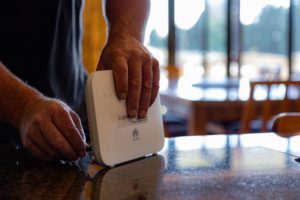Alright, so that nerdy pun sucked, apologies. But now that you are here, let’s talk about Lightwire deploying lithium batteries on its network in November. PIR2 (located in Pirongia) is our first mains-powered, lithium battery-backed rural site; representing Lightwire’s first steps toward widespread adoption of lithium battery technology as our primary energy storage platform.
In developing the right solution for our complex network, we worked closely with our suppliers and advisors at Complete-coms and Eltek, as well as with external consultants. Following comprehensive lab acceptance testing, the first unit was deployed to PIR2 in November as a field trial on a live, mains-powered site, and a solar-powered field trail will follow in the near future at PIR (also located in Pirongia).
This is an expensive shift in thinking for Lightwire, but one we are embracing to improve the experience of our customers. Here is how our customer will benefit from lithium batteries:
- Higher charge currents and more efficient energy storage allow for faster site recovery after outages or poor weather. We can recover a discharged battery to 100% 2-3 times faster than lead-acid.
- The smaller size and greater energy density of Lithium batteries mean 1/4 of the space and 1/6 the weight for the same energy compared to lead-acid batteries. This means we can rack mount our batteries in the same comms cabinet as our active equipment, no need for additional enclosures on site. Less complexity means fewer barriers to deployment and more properties will be in coverage from new site builds.
- Customisation and reporting. The on-board BMS logs and reports on battery health, state of charge, temperature and many other service attributes to allow Lightwire to make informed decisions making and make fault finding a more efficient process. The BMS also allows for a unique level of control such as customisable depth of discharge which lets us prepare for planned outages or increase autonomy during unexpected faults. In short, we can do more to ensure our customers stay connected.
- Lithium batteries have a longer life, so there are longer periods between replacement, bringing the cost-benefit of lithium battery deployments in-line with, or better than, our existing lead-acid solution. More cost-effective solutions allow for more attractive price points.
I told you it wasn’t a Li, Lightwire really is investing heavily in our network to ensure we provide the best possible experience for its customers.
I’ll see myself out.


